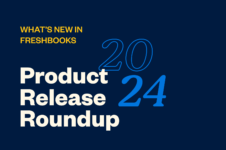Chances are you’re making at least one of these invoicing mistakes. The good news? Once you’re aware of them, they’re easy to avoid or fix!

Sending an invoice to your clients is an important step in getting paid. No doubt, you understand this. But, often in your haste to send those invoices, you may make some common invoicing mistakes that lead to delays in getting paid.
One of the easiest ways to avoid invoicing mistakes is with invoicing software or a free invoice template. By using invoicing software or an invoice template, you can instantly minimize the number of common errors that happen on invoices.
Considering how important invoicing is to your payment process, which in turn affects your cash flow, these invoicing mistakes should be something to avoid.
So without further ado, here are ten very common invoicing mistakes and billing errors you can easily avoid.
Table of Contents
Mistake #1: Not Promptly Sending Your Invoice
As a freelance writer, I usually submit my invoice immediately after I’ve submitted my first draft to the client. In instances where I’ve negotiated an upfront deposit, I send the invoice before I start work and request the balance upon submission of my article.
In either case, don’t wait for your customers to ask for the invoice. They’re busy, and chances are they’ll forget to remind you, and unpaid invoices may pile up. The responsibility is yours.
The sooner you send that invoice, the faster the customer pays. So please don’t wait for month-end or their billing cycle to restart. Act promptly once your work is complete. See how easy it can be to avoid invoicing mistakes.
Mistake #2: Failing to Specify a Due Date for Payment
As a business owner, have you made the mistake of sending “open invoices” to clients and including vague invoice payment terms? Consider these examples:
“Upon receipt,” tells the client that they need to pay the invoice as soon as possible. But, “as soon as possible” is open to interpretation.
“Net 30” is confusing for those who aren’t business savvy.
“Within X number of days of article completion” can also be understood differently among clients.
To avoid any confusion, specify the exact payment day. For instance, if you submit your invoice on the 1st of August and want payment within a week, set the payment date for the 8th of August. The ability to customize due dates is a feature that FreshBooks Invoicing provides.
Setting a date for payment will also help you predict cash flow, as you’ll have a better sense of when you’re going to get paid.
Mistake #3: Sending The Invoice to the Wrong Person
Has this happened to you? You send an invoice to your contact at a company, only to find that after two days they still haven’t paid.
You follow up, and the client responds by saying they’re not the right contact and that you need to send the invoice to person X.
You’ve now wasted two days and have to restart the invoicing process. Instead, tie up those loose ends at the beginning of the relationship by asking who your key billing contact is. This will get you paid faster and keep cash flowing in.
Mistake #4: Not Itemizing Services
While some clients don’t need detailed and itemized service breakdowns, others do. For many customers, it’s a matter of procedure and helps when tracking, recording, and reporting expenses.
Making it a habit of providing itemized service breakdowns, regardless of who the client is, is a foolproof way to avoid receiving emails from clients asking for service breakdowns. This can impact your invoice from being paid in a timely manner as now your client has sent it back to you for revisions.
For instance, if I wrote a blog post for a client, I may include the title, word count and state that it’s a blog post all within the description in the invoice.
Mistake #5: Not Showing Courtesy In Your Invoice
Believe it or not, this is one of the biggest invoicing mistakes. An article on the FreshBooks Blog titled “Use Your Invoice Payment Terms to Get Paid Faster” highlights how showing courtesy in your invoice can get you paid faster and result in positive cash flow. For example, 45.12% of invoices that use “Thank You” in the payment terms get paid in fewer than seven days, with an additional 12.70% getting paid in fewer than 14 days.
Many business owners, however, fail to include phrases like “Thank you for your business” or “Please pay by [date].”
Type out please and thank you at the bottom of your invoices. As shown in FreshBooks research, 89.61% of invoices are paid when they include the term “Thank You,” while 88.07% of invoices are paid when they have the word “Please.” Being polite in your invoice payment terms gets you paid faster.
Considering the benefits, why don’t you give it a try?
Click here to read the full article about invoice payment terms.
Mistake #6: Not Restating Terms
It’s important to specify terms and provide a detailed breakdown of services and costs to avoid scope creep with any project.
It’s also crucial to restate these terms and specify what services you did provide when you’re sending invoices. Why? So you can protect yourself from scope creep.
Clients can sometimes make more demands on your time by requesting extra revisions and changes after you’ve invoiced. Restating the terms protects you from this behavior and reduces the risk of unclear terms.
Mistake #7: Not Following Up
You sent an invoice, three weeks have passed, and still, no payment. Have you followed up?
I can’t tell you how many times I’ve sent an invoice, followed up a week later, and received an apology and payment the same day.
Some clients forget to pay because they’re busy. Some clients will wait until the exact due date to pay, and others wait until you badger them (yes, these clients exist). In either case, following up solves problems of late payment.
If you’re someone who dislikes following up and would rather take the personal element out of it, FreshBooks lets you automatically send customized late payment reminders, so you never feel awkward about following up. On top of automated reminders, you can also set and automate late fees in FreshBooks, so keeping track of misbehaving clients and unpaid invoices is just a little easier.
Mistake #8: A Difficult Payment Process
A client has received your invoice, but there’s one problem: They have no idea how to pay you. Sound familiar? You need to let your client know how to pay you, whether it’s via a bank transfer or through online payments platforms such as Stripe. Offering multiple payment options to your clients is an easy way to avoid common billing errors, late payments, and ensure you’re paid don’t time more often than not.
Even if you specify the payment method, ask yourself, “Have I made it easy for clients to pay me?” If the ability to pay isn’t one click away, you should consider fixing it. If you are still using paper-based invoicing, then get used to waiting for payment.
FreshBooks provides multiple payment options by accepting credit card payments, Apple Pay, bank transfers, Paypal, and Stripe. Not only is it convenient for the client, but it speeds up payment.
Mistake #9: Including Surprise Fees
No one likes surprise costs, and your customers are no different. If you need to do extra work that extends beyond the agreement, speak to your client before doing that work and especially before invoicing for it.
Outside of common invoicing errors that make it tough for you to get paid, shocking your clients with additional costs and fees creates a bad experience for them, and can harm your client relationship.
Mistake #10: Sending an Invoice That Includes Errors
Have you sent an invoice, only to realize that the date is wrong, the invoice number is incorrect, there are spelling mistakes, and you haven’t referenced the PO or included information that the client requested?
Have you ever forgotten to include your company logo or send a branded invoice? Small businesses need to think about how their customers encounter their brands, so a consistently positive experience can also help you get paid on time.
I’m sure you’ve made at least one of these mistakes, especially when creating invoices in Excel. The solution is to proofread your invoices for spelling errors and all other errors before sending them. this can prevent constant back and forth emails that further delay payment.
Alternatively, upgrade to an automated online invoicing system. FreshBooks lets you customize your invoices with your brand and colors, will update the invoice number as you create invoices, and lets you preview invoices before sending them.
FreshBooks Invoicing Helps Avoid Common Mistakes
Aside from these features and benefits, and the others mentioned in the post, FreshBooks Invoicing helps you:
- Impress your clients with custom branded invoices
- Get paid for work upfront by requesting a deposit
- Manage overdue invoices by setting a late fee when invoices become overdue
- Save time by automating the invoice schedule and duplicating invoices when you need a similar invoice to the one sent in the past
- Reward loyal clients with the ability to set discounts
- Cater to your client’s needs with multi-currency billing and multi-language invoices
- Create subscriptions or use checkout links to avoid invoicing altogether
So, are you ready to improve your invoicing process? Try FreshBooks free for 30 days with no credit card required and see just how easy it is to avoid these mistakes.

Written by Nick Darlington, Freelance Contributor
Posted on September 16, 2019








